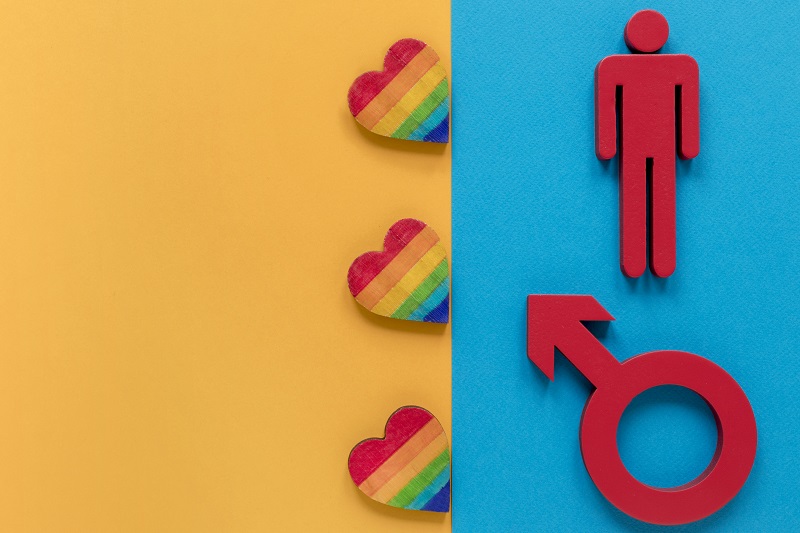|
|
Gender and Sexuality Differences
When exploring gender and sexuality differences, you'll uncover a vast landscape of identities and orientations that defy traditional categorizations. The nuances of how individuals experience and express their gender and sexuality go far beyond simplistic labels, inviting a deeper reflection on the intricacies of human diversity. As you navigate this multifaceted terrain, you'll find yourself questioning preconceived notions and perhaps discovering new perspectives that challenge societal norms. Stay tuned to explore the complexities and nuances of gender and sexuality differences that shape our understanding of identity and relationships. Understanding Gender and SexualityUnderstanding gender and sexuality involves recognizing their distinct definitions and functions. Gender pertains to the societal and cultural roles linked to an individual's assigned sex, while sexuality encompasses emotional, romantic, and sexual attractions. Variations in gender identity include cisgender, transgender, and nonbinary, while sexual orientations span beyond conventional categories such as heterosexual, homosexual, bisexual, and pansexual. Discrimination based on gender and sexuality impacts disenfranchised communities on interpersonal and systemic levels. A clear comprehension of the disparities between gender and sexuality is pivotal for fostering inclusivity and respect towards all persons. This comprehension is crucial for advancing acknowledgment and facilitating access to gender-affirming medical services for the LGBTQIA population. By the way, did you know that a category of “toon” adult videos exists? If you are interested, check out this Toon Porn Videos. Gender Identities and Sexual OrientationsGender identities and sexual orientations encompass a spectrum of experiences and expressions that extend beyond traditional societal norms. Examples of gender identities include transgender, nonbinary, and genderqueer, which challenge the binary understanding of male and female. Gender identity pertains to an individual's internal sense of self and is crucial for supporting transgender and nonbinary individuals. Sexual orientations, such as heterosexual, homosexual, and bisexual, refer to the range of attractions towards different genders or identities. It's important to differentiate between gender identity and sexual orientation to foster inclusivity and respect for LGBTQIA+ youth and all individuals with diverse gender identities and sexual orientations. Acknowledging and validating diverse gender identities and sexual orientations is essential for cultivating inclusive and supportive environments where everyone feels accepted and respected. Discrimination and ImpactsDiscrimination based on gender and sexuality has profound impacts on individuals and communities across various dimensions. The intersectionality of gender and sexuality discrimination tends to worsen marginalization, particularly affecting BIPOC individuals disproportionately. Gender-based discrimination, such as disparities in pay and limited job opportunities, contributes to economic inequalities and hinders professional advancement. Individuals facing discrimination based on gender and sexuality are at a heightened risk of experiencing mental health issues like depression, anxiety, and low self-esteem. These discriminatory practices not only directly harm individuals but also have broader repercussions on families, relationships, and communities. Addressing systemic biases and promoting inclusivity are essential steps to mitigate the adverse effects of gender and sexuality discrimination. Resources for Gender TransitioningAddressing the needs of individuals undergoing gender transitioning, particularly concerning mental health support, plays a vital role in promoting well-being and inclusivity within LGBTQIA+ communities. LGBTQIA+ resources offer affirming care to assist gender transitioning individuals. Here are three key aspects underscoring the significance of resources for gender transitioning:
Access to supportive resources is crucial for facilitating positive experiences for individuals navigating gender transitioning. Data Processing and PrivacyData processing and privacy are essential considerations for organizations and their partners when storing information on devices for various purposes. Data processing activities, such as advertising selection, personalization, and performance measurement, are integral to improving user experience. Privacy policy settings empower individuals, including those exploring their gender identity or sexual orientation within the LGBTQIA+ community, to manage their data choices and safeguard their information from potential discrimination. Services undergo continuous enhancement through data analysis to offer personalized advertising, content selection, and improved service delivery. Prioritizing privacy and transparency in data processing is crucial for organizations to build and maintain trust with all users, including those from diverse gender and sexual orientation backgrounds. ConclusionIn conclusion, embracing the diversity of gender and sexuality differences is crucial for fostering a more inclusive society. By recognizing and respecting the various identities and orientations that exist beyond traditional norms, we can create a more accepting and supportive environment for all individuals to express their authentic selves. It's through understanding and celebrating these differences that we can truly promote equality and acceptance for everyone. |
|
|
|
|
|